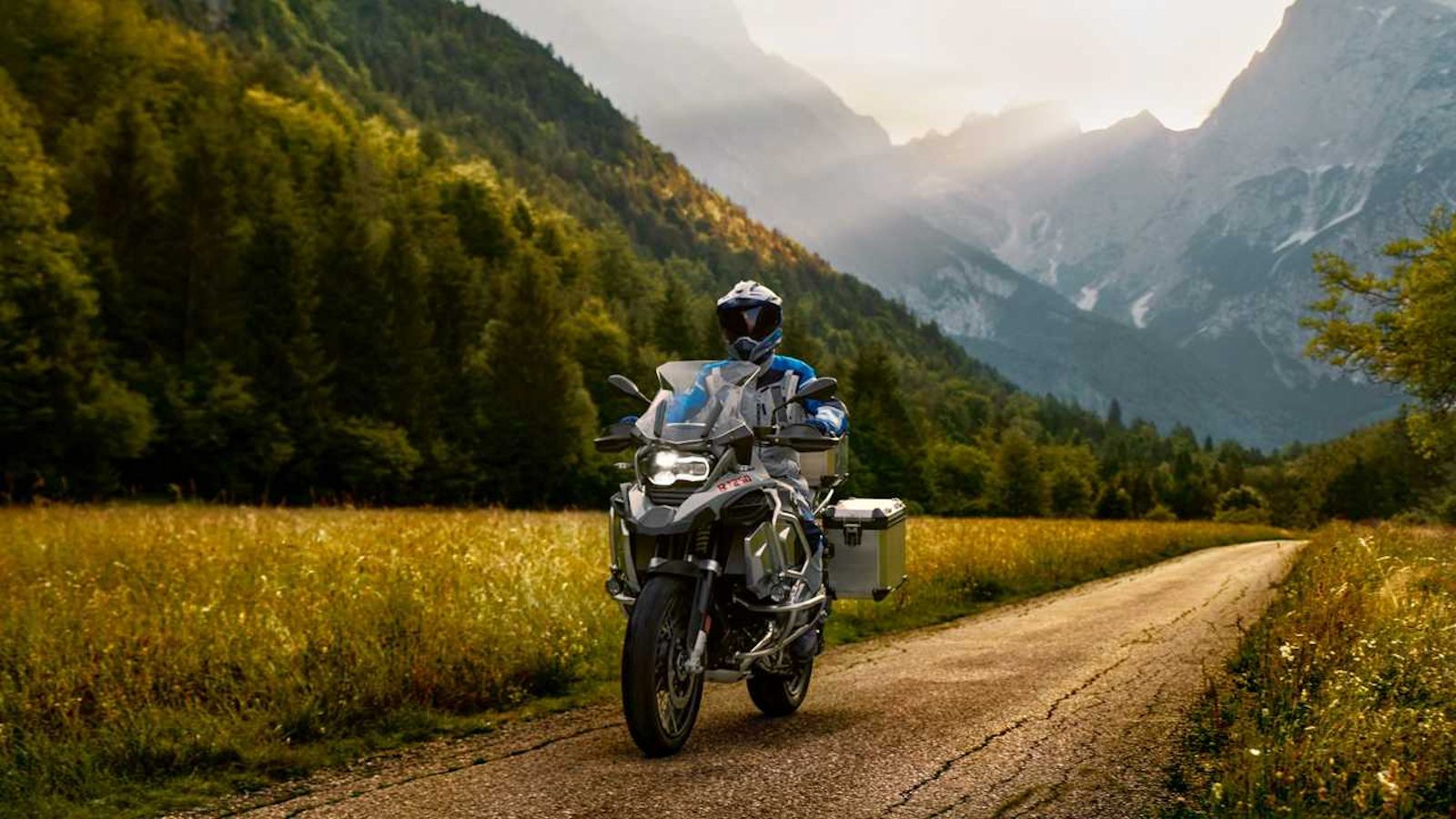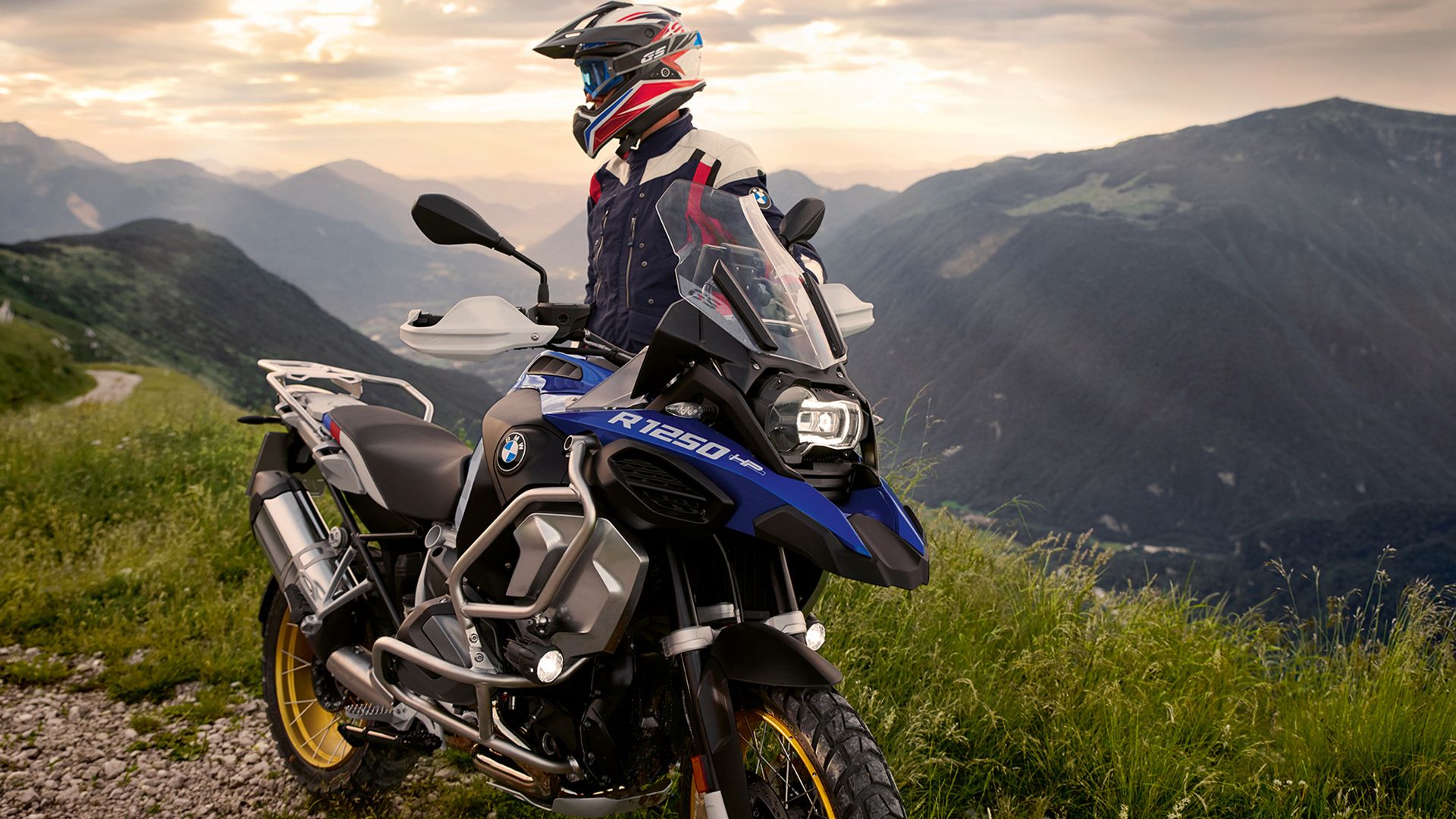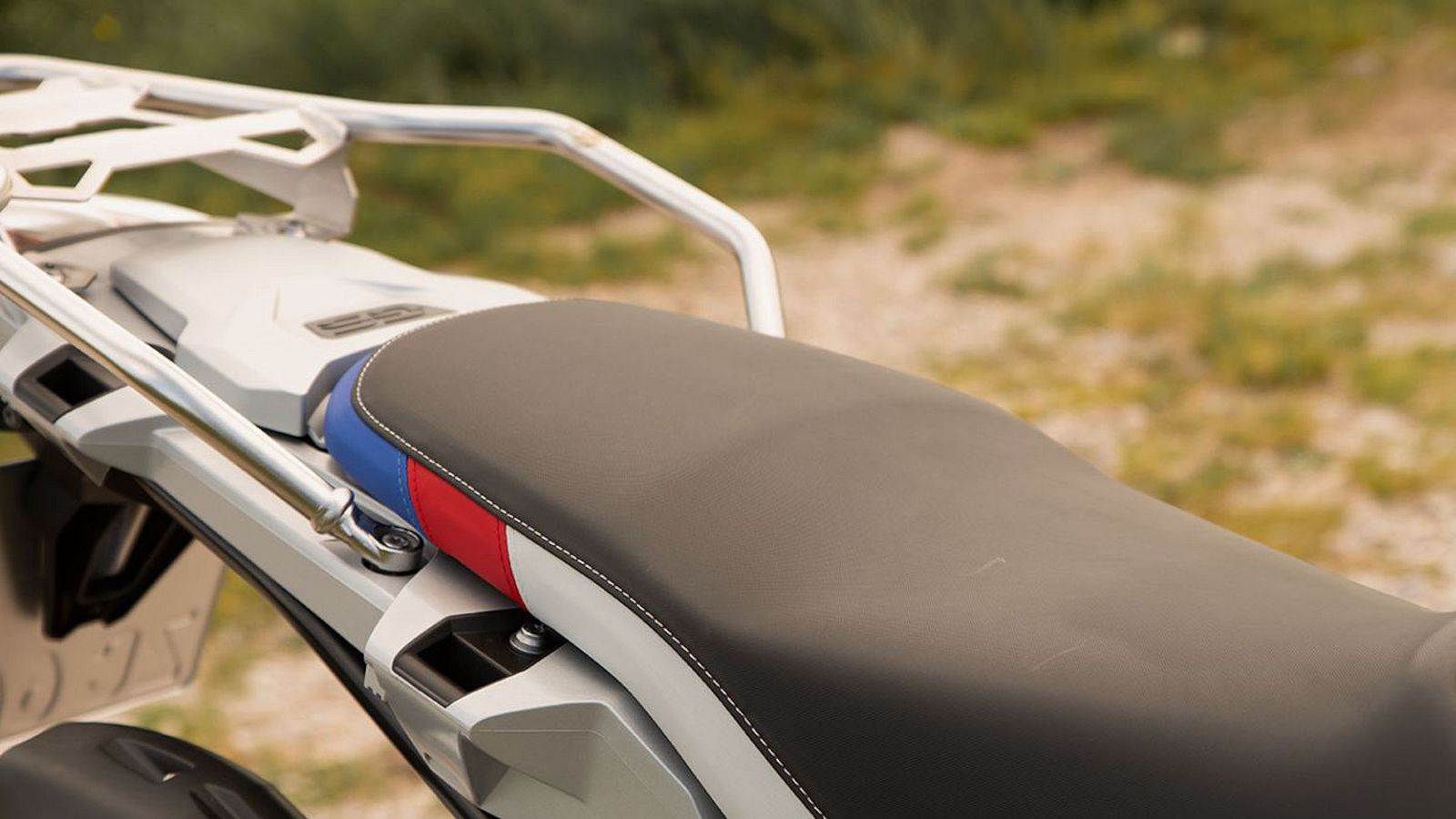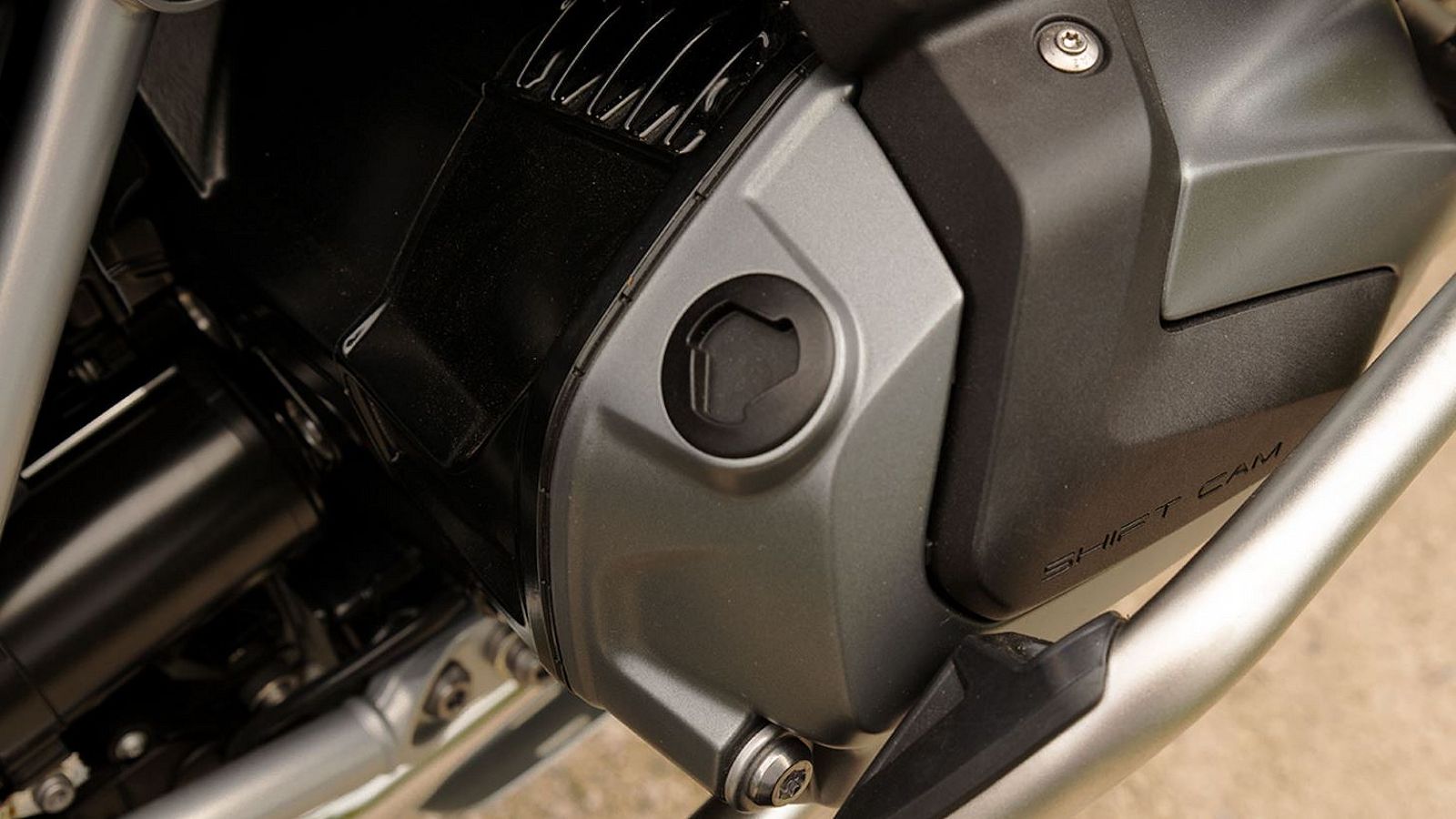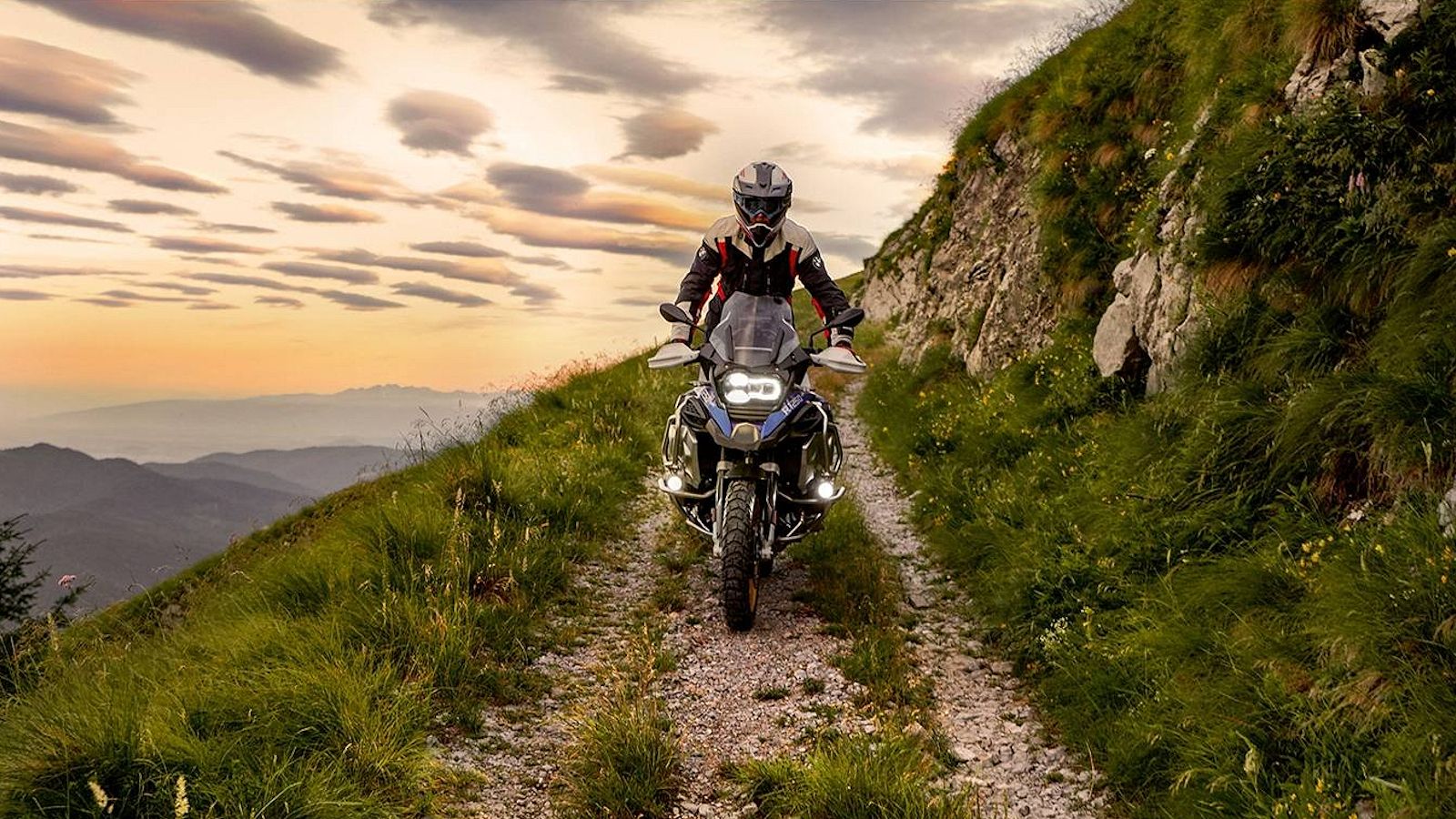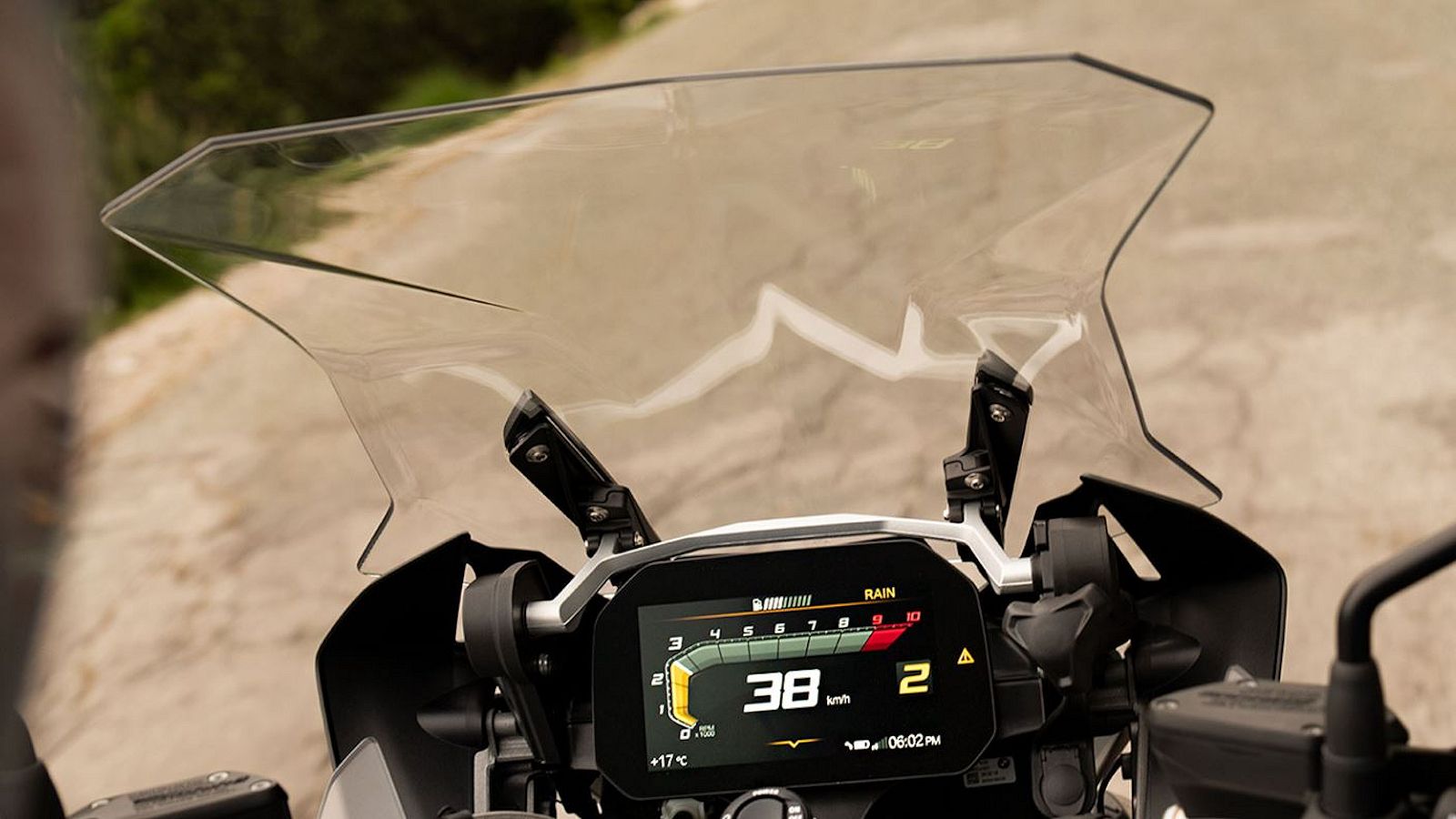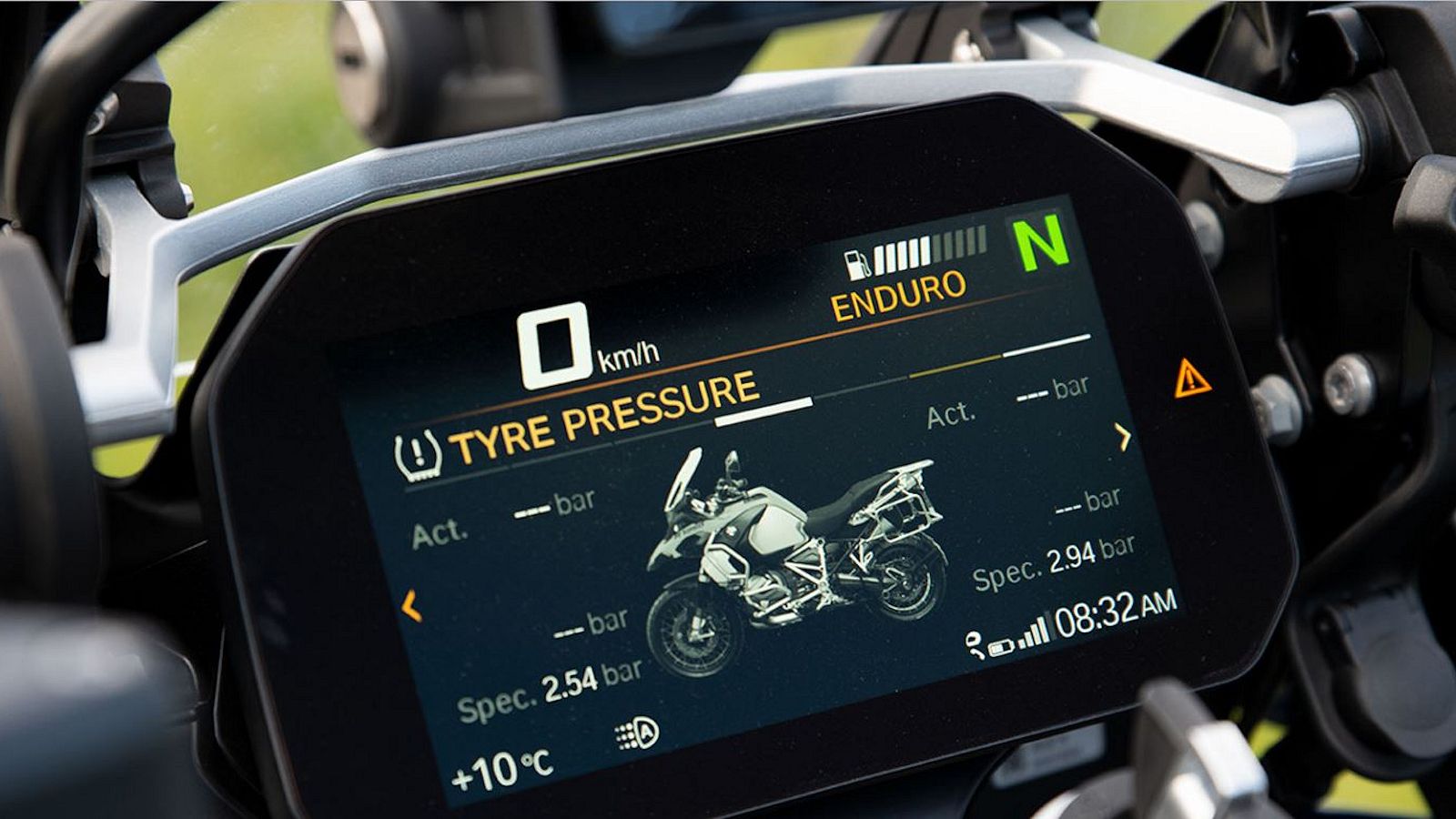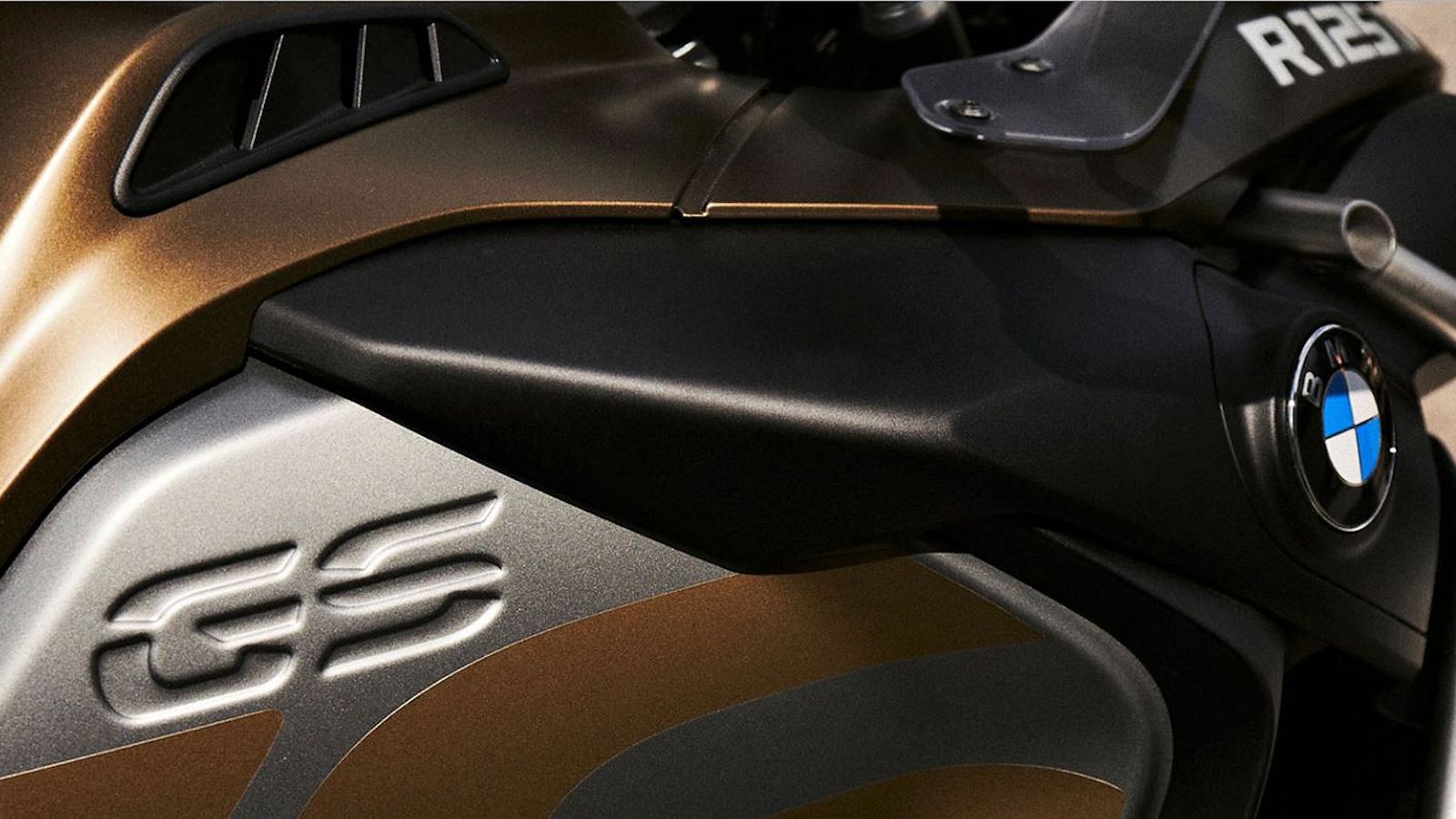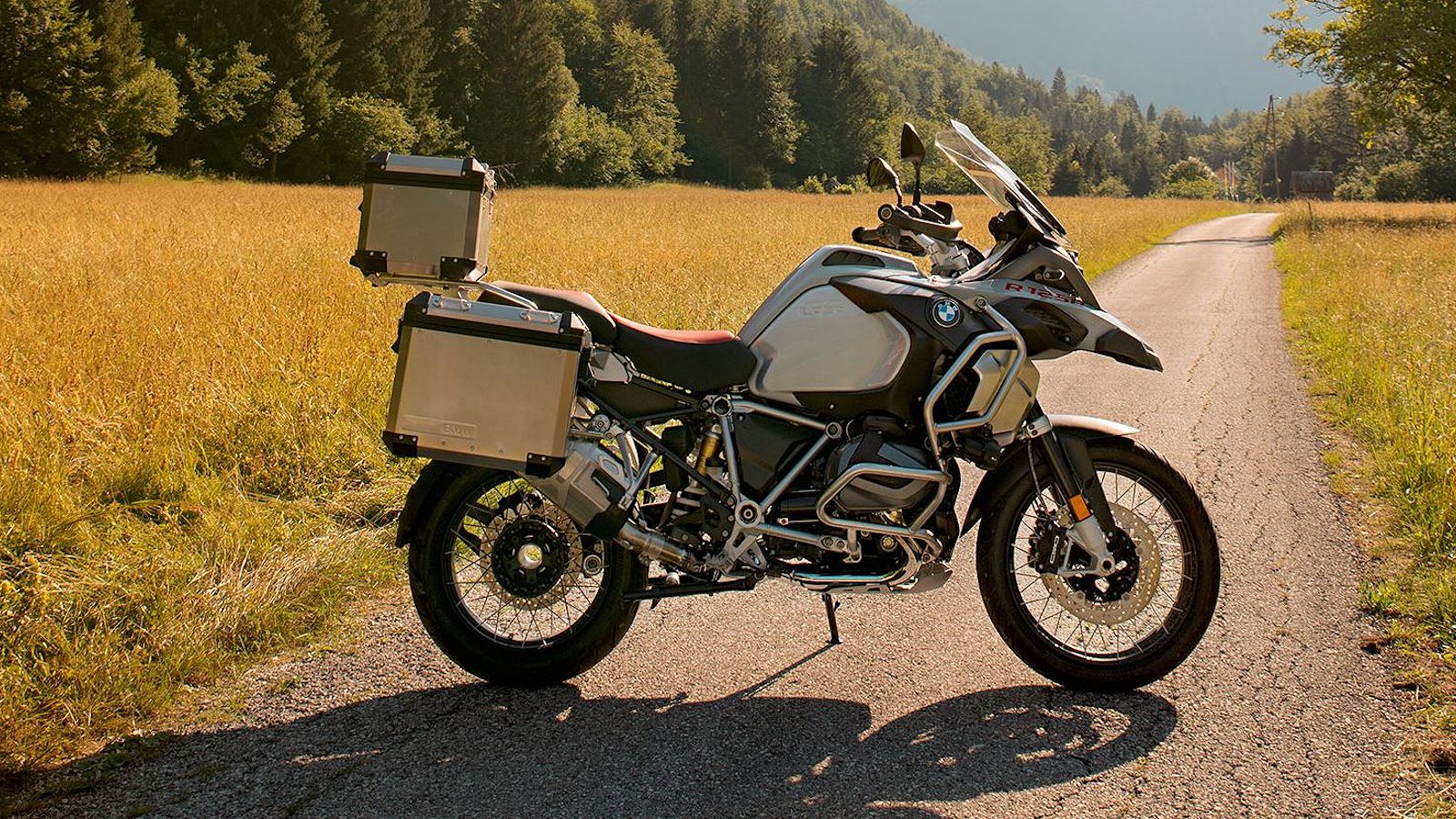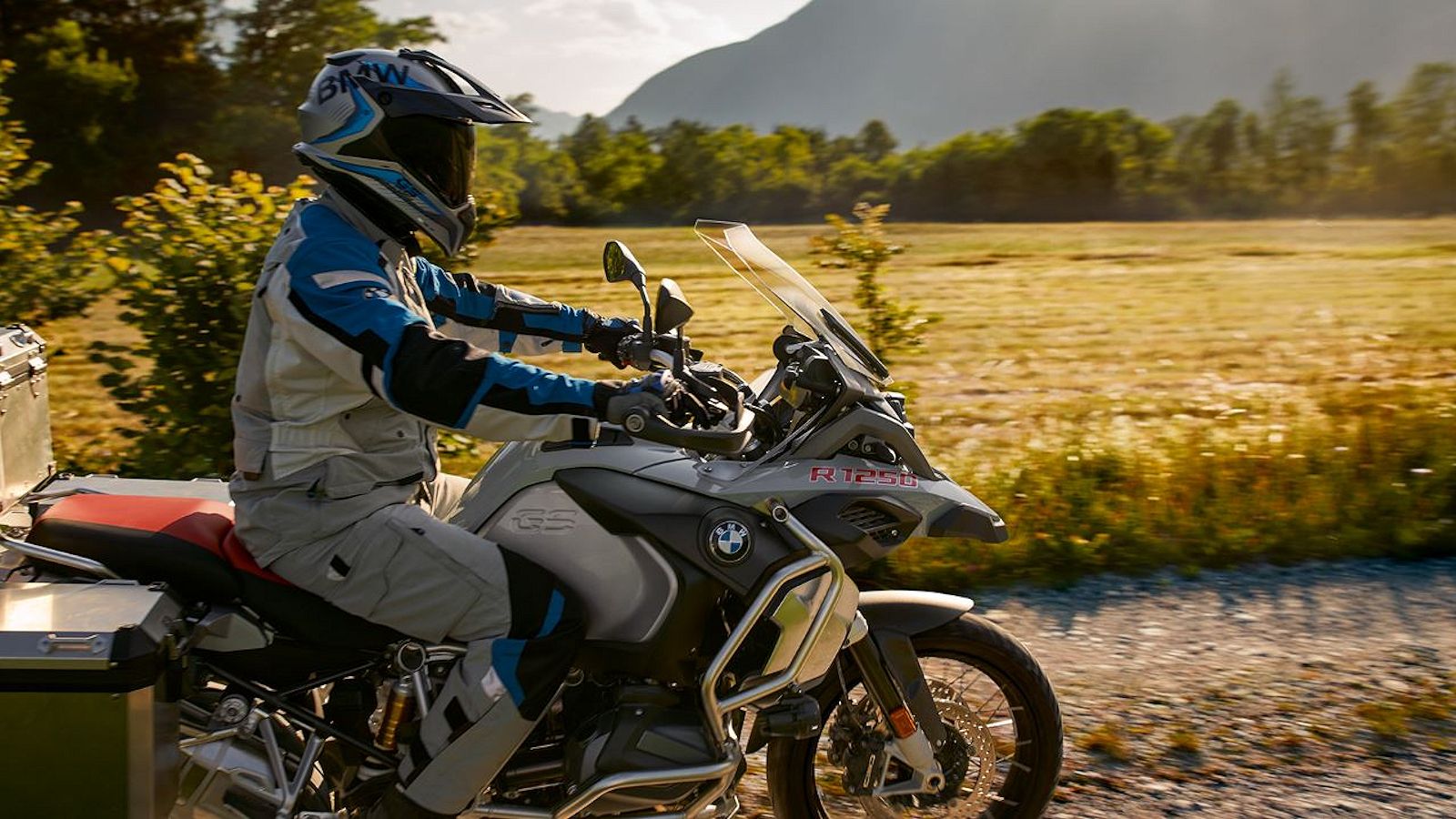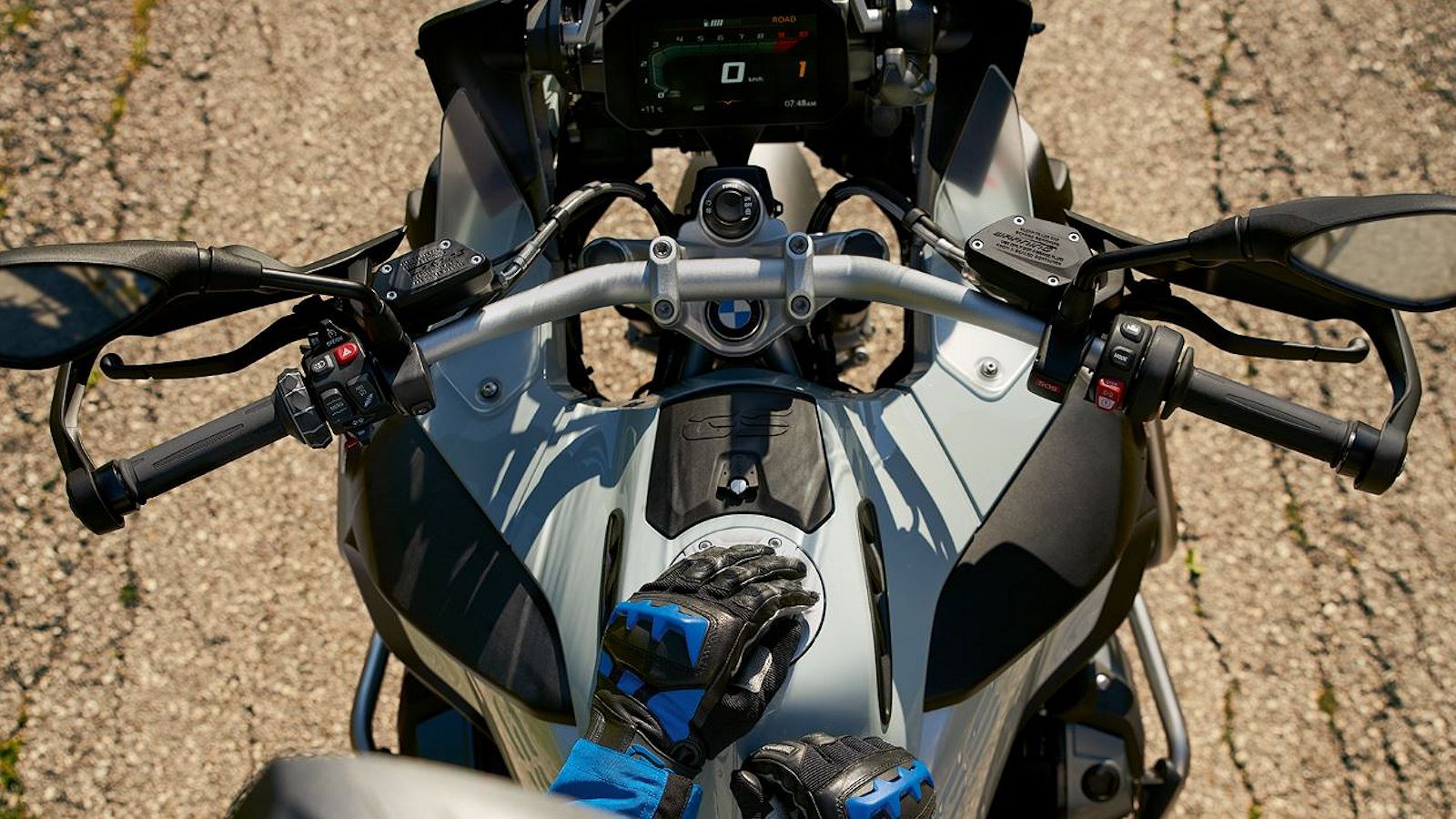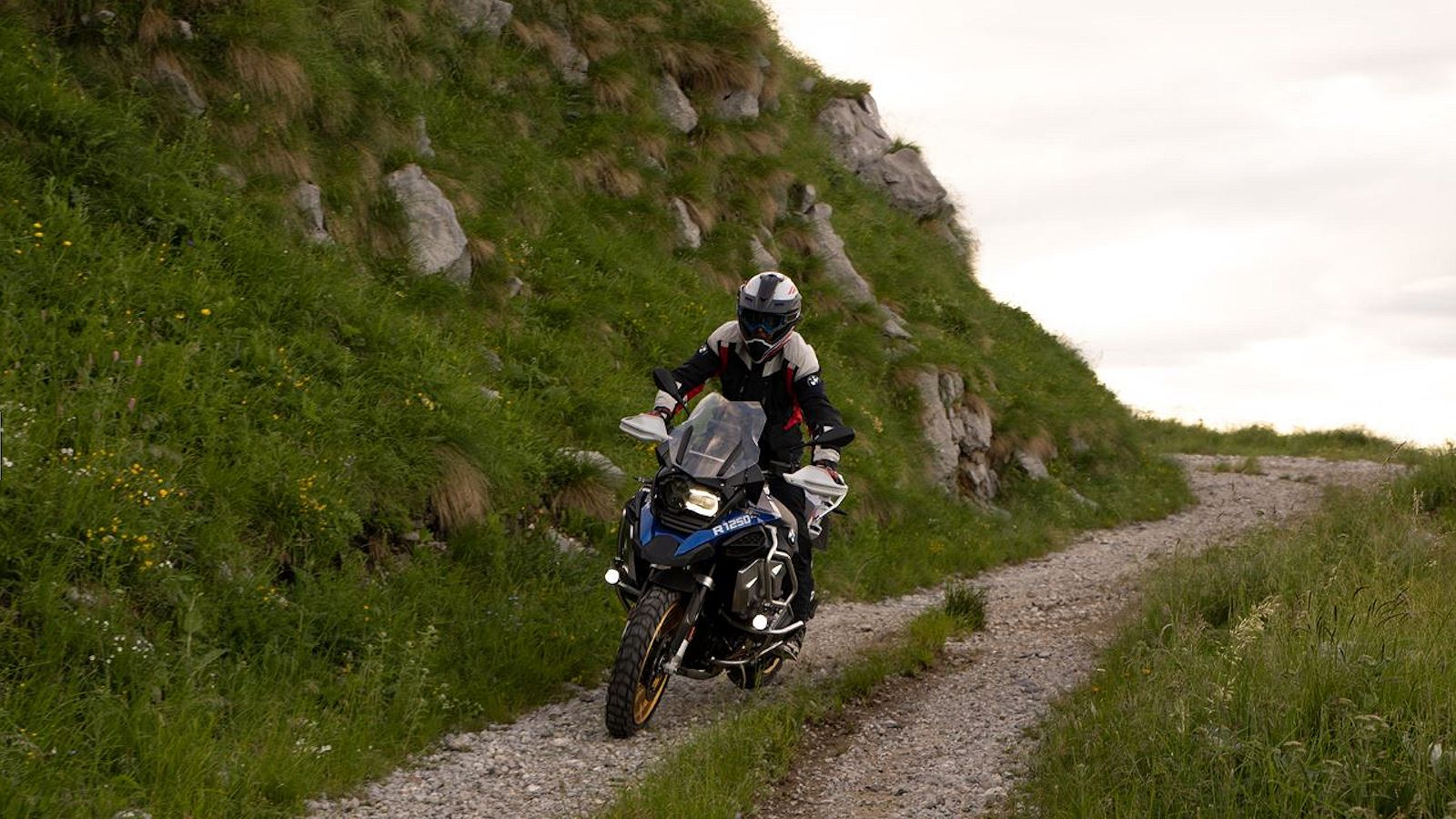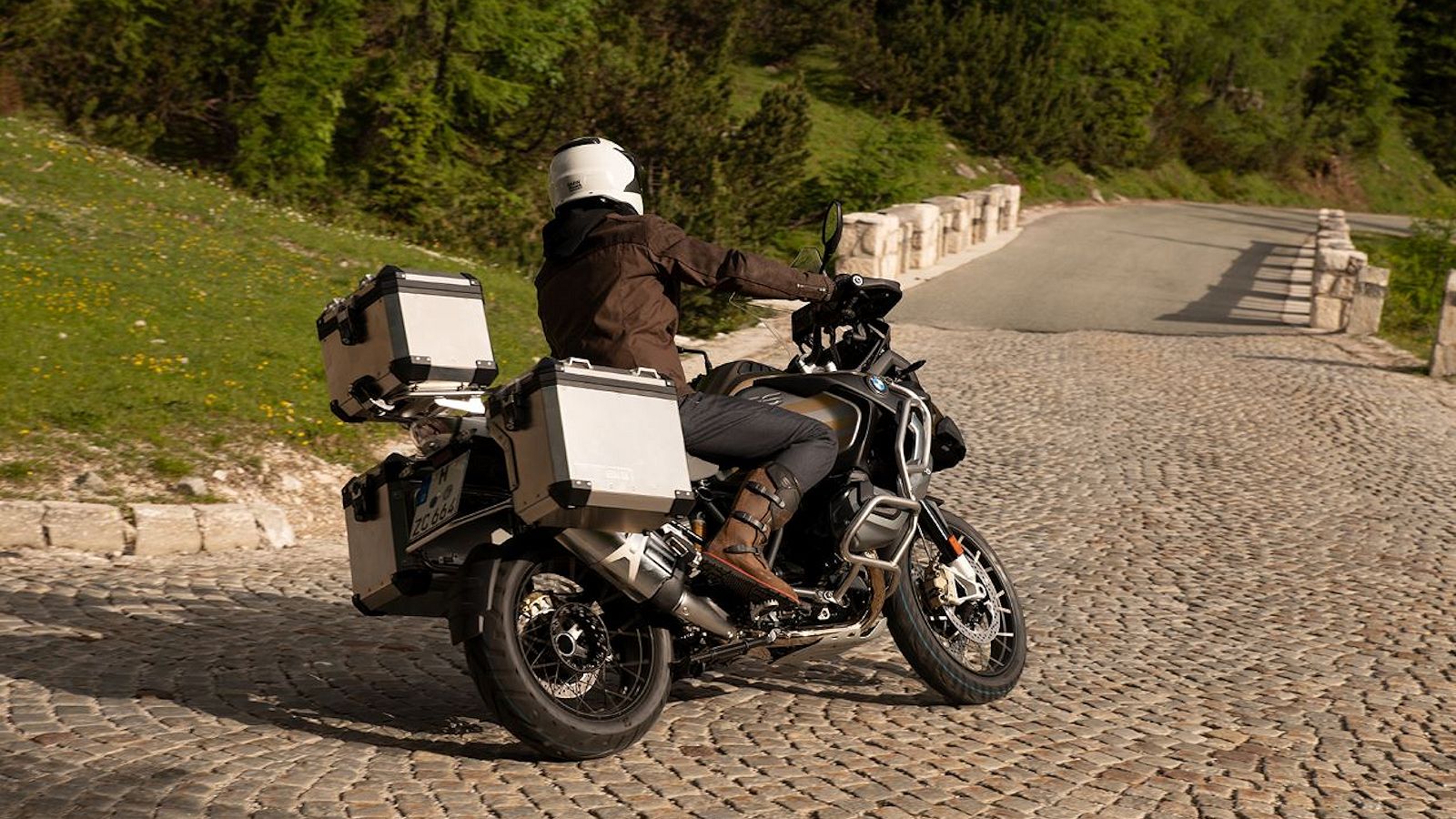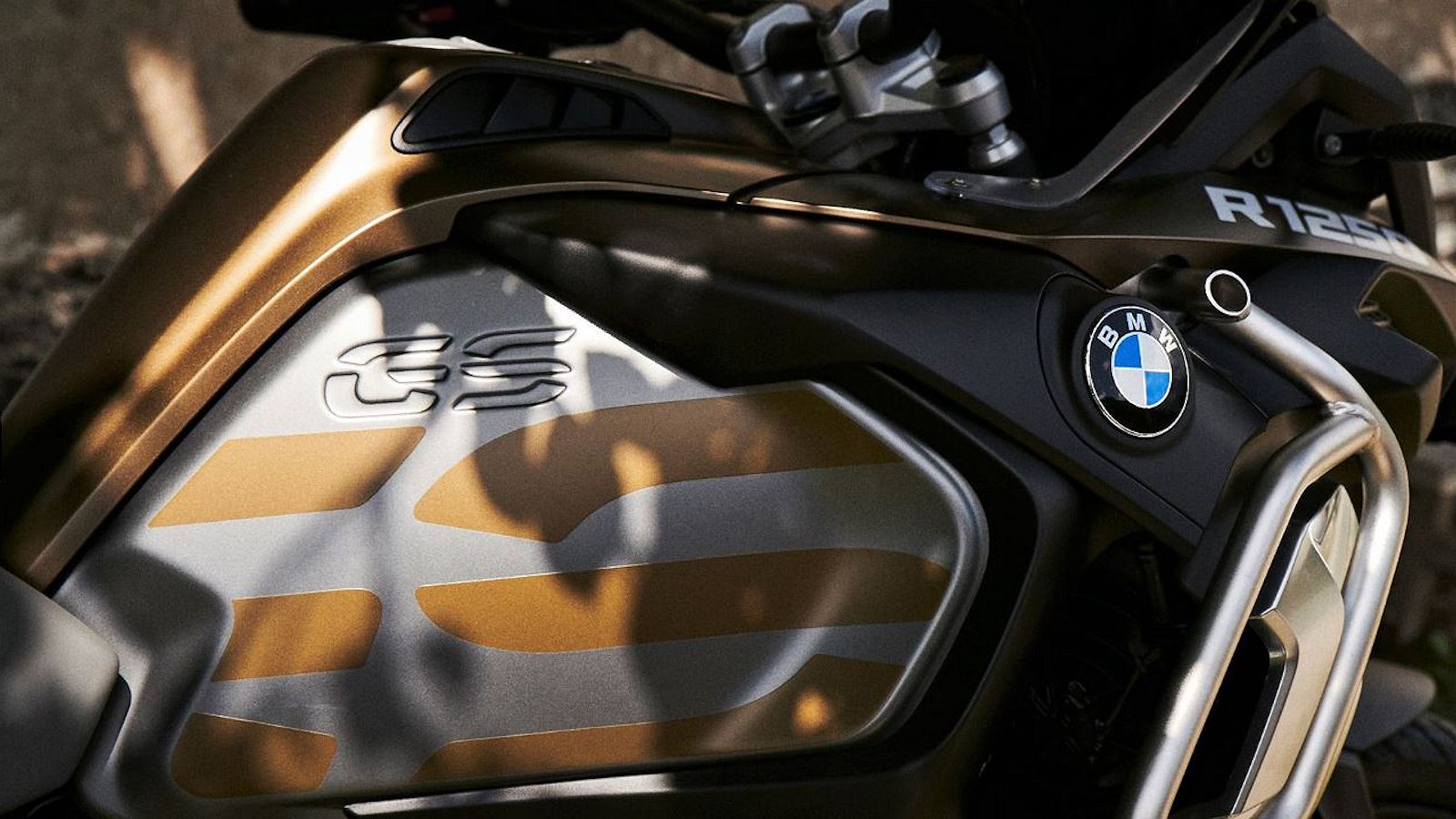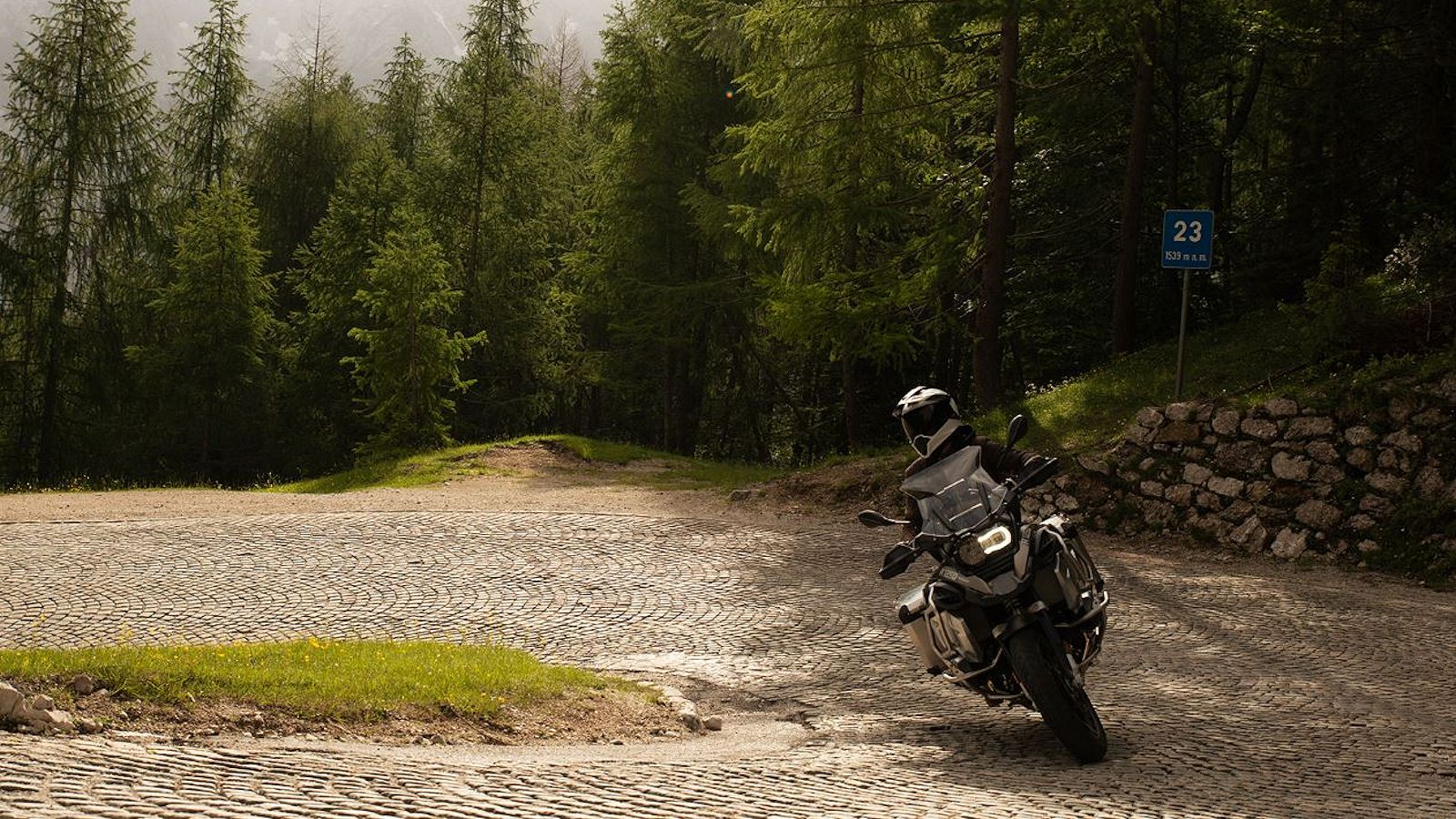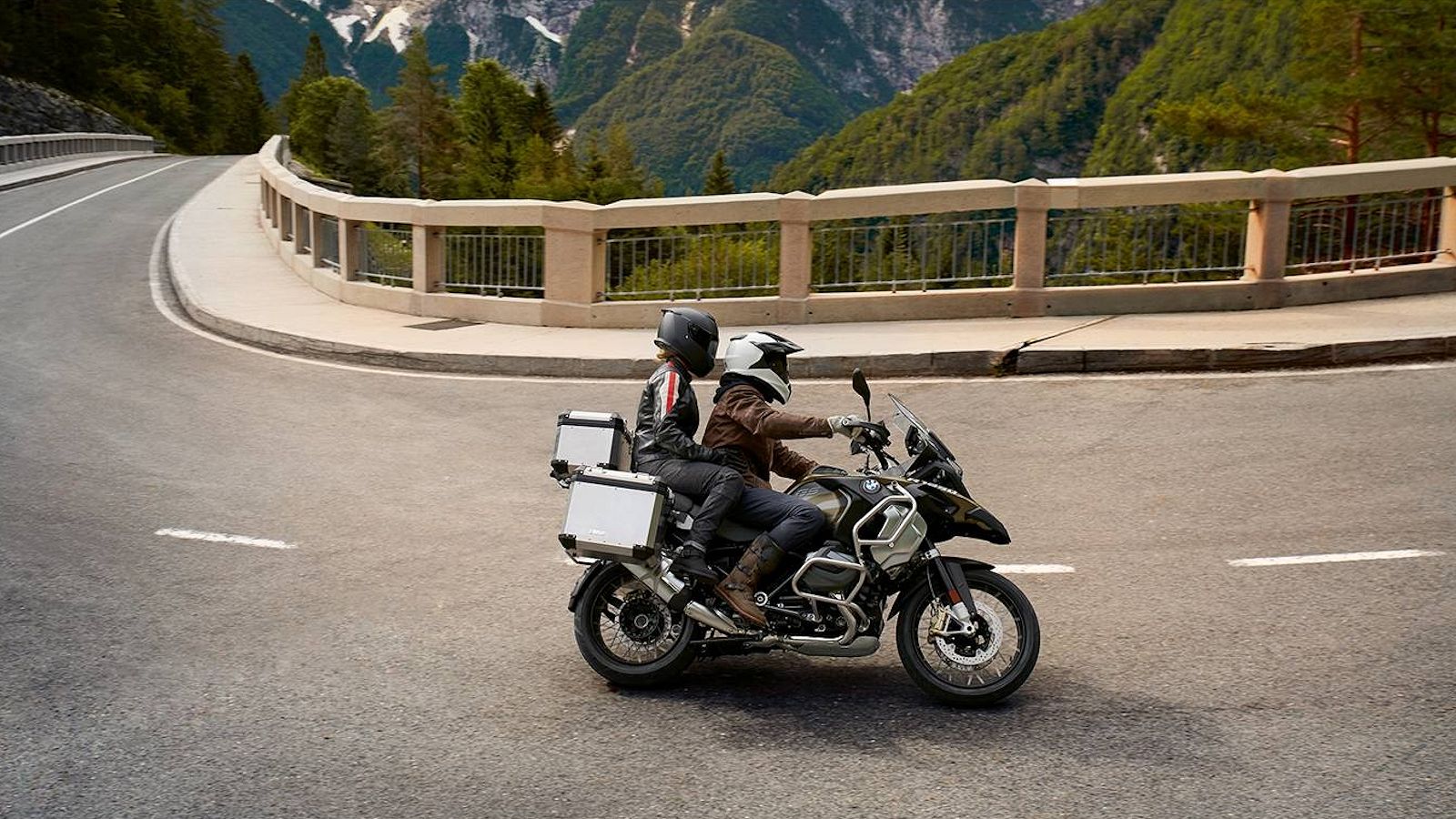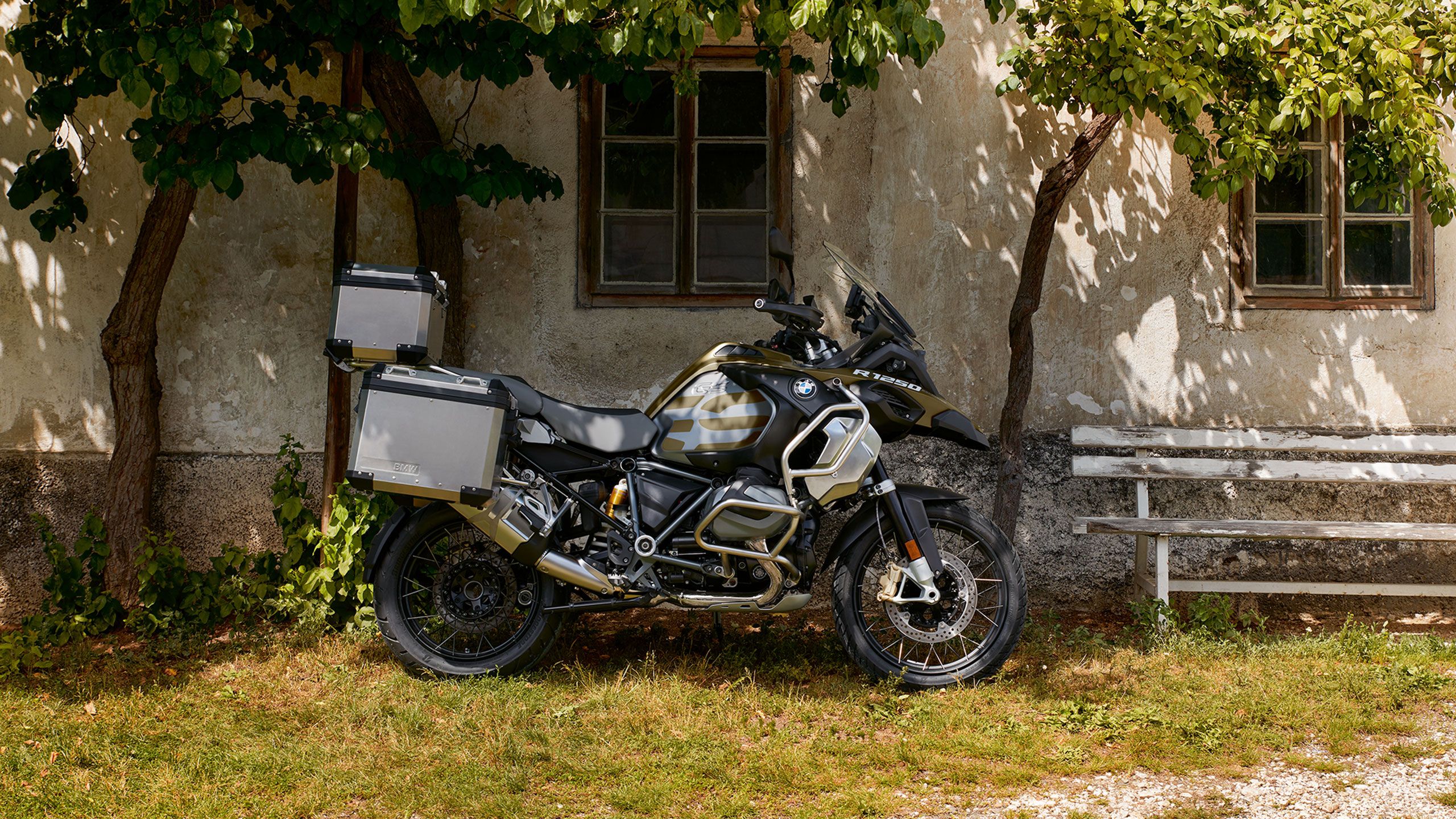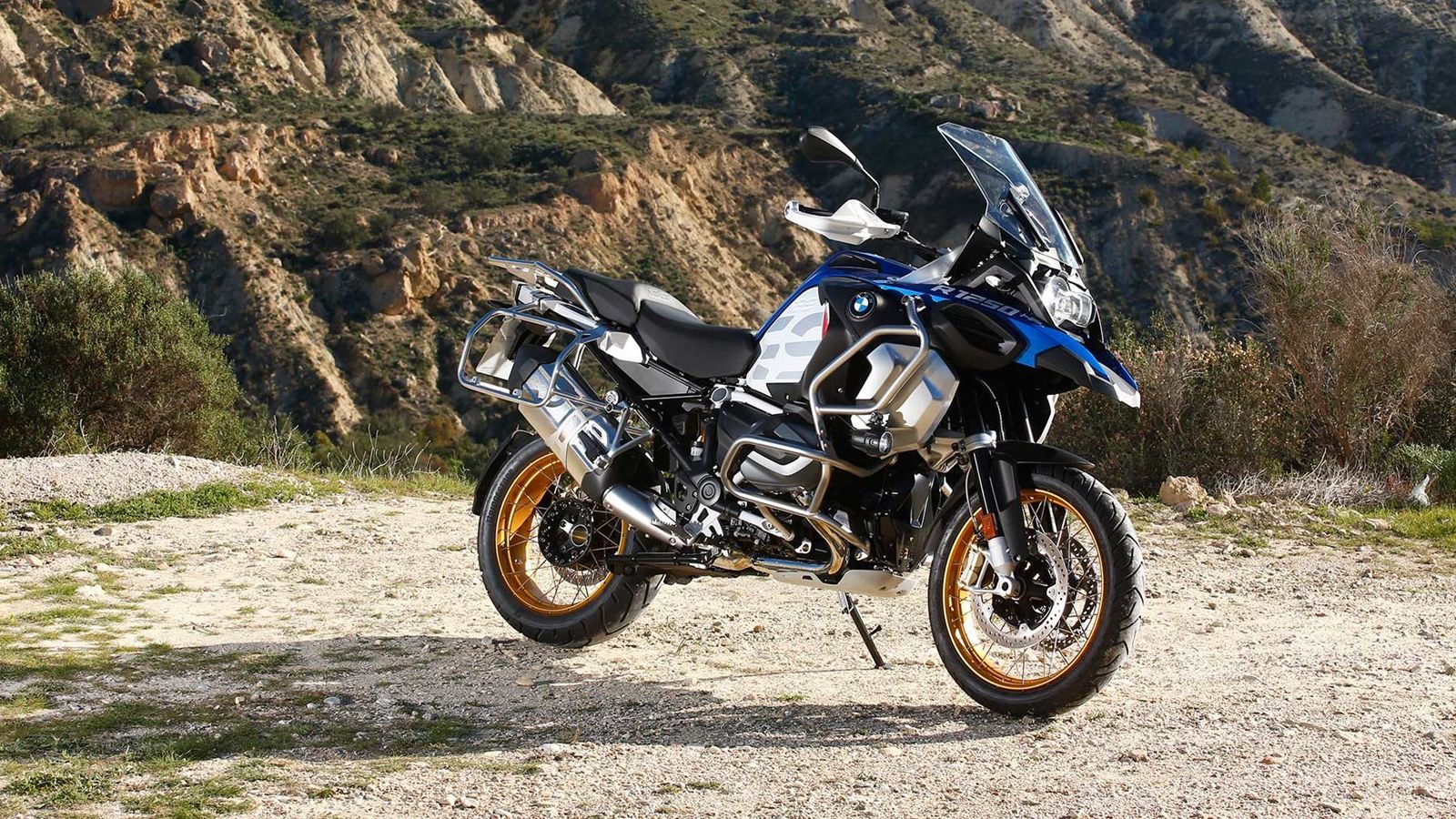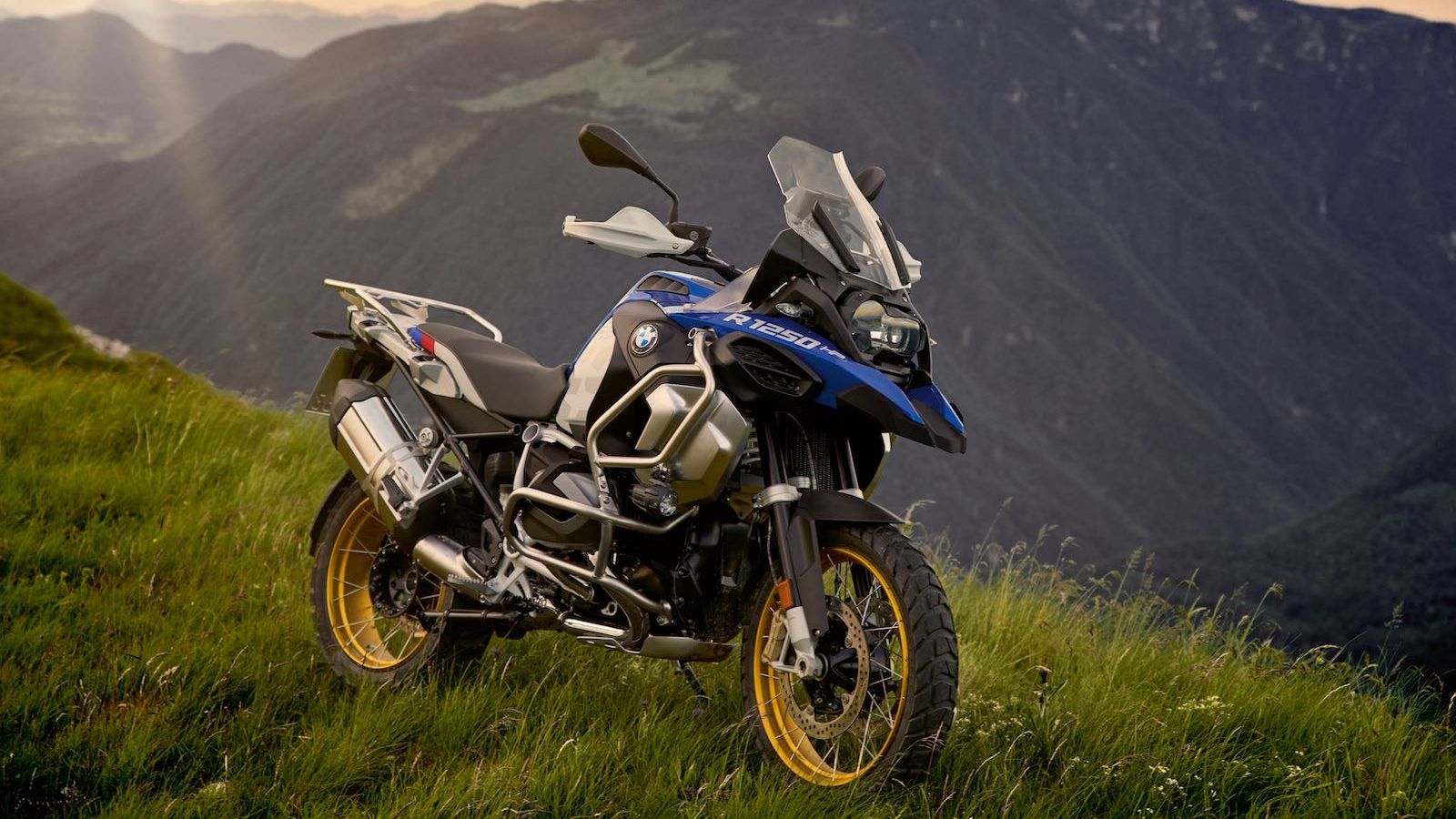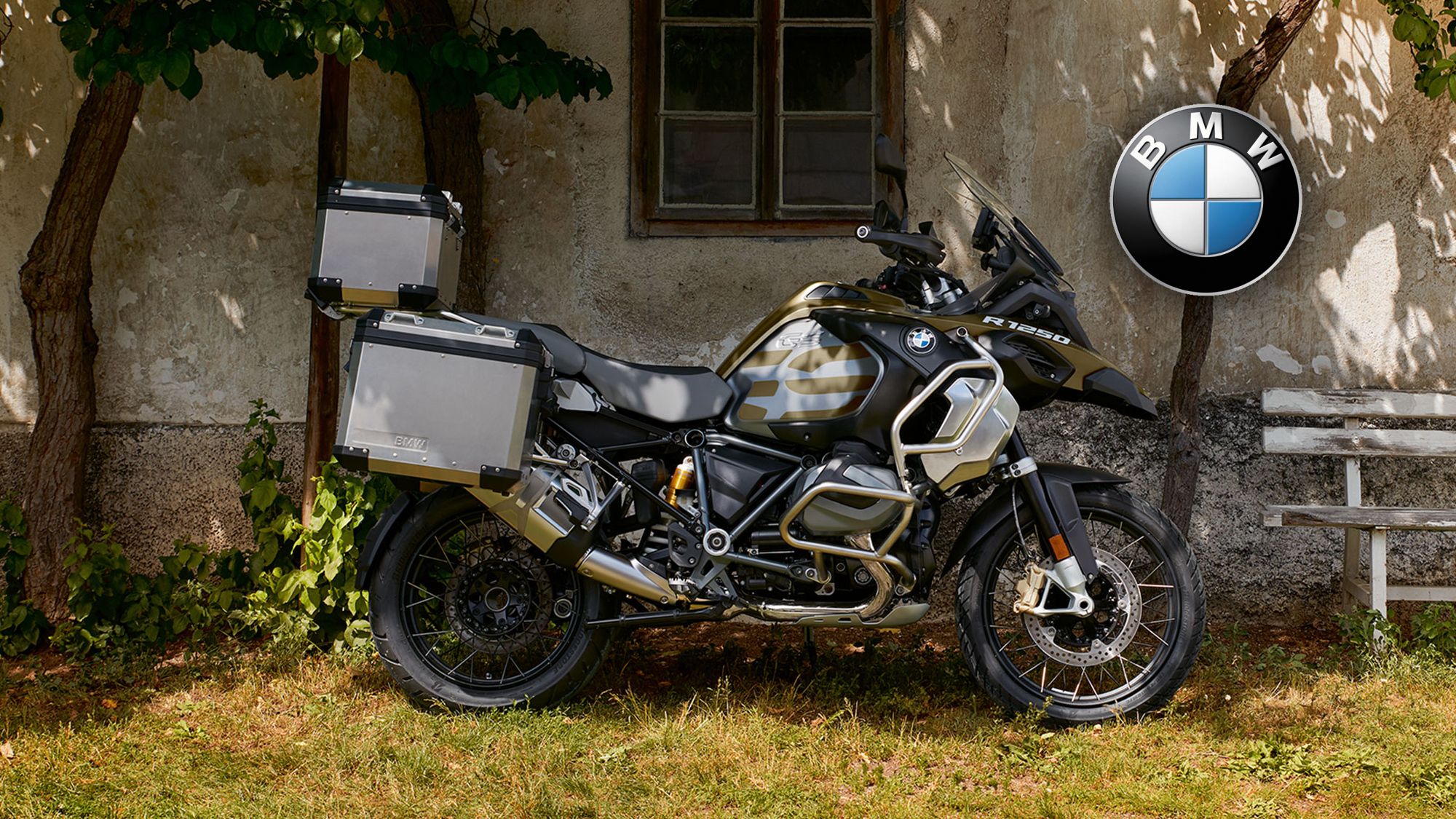BMW Motorrad refined its top-end adventure bike lineup ahead of MY2019 with the R 1250 GS Adventure. It builds on the base R 1250 GS platform with a handful of off-roadtastic features on top of the extensive fandanglery already associated with this family, plus an increase in both power and torque from a new, higher-displacement, Shift-Cam engine. In addition to the stock equipment, Beemer offers extensive customization options through its accessory catalog to turn the “Adventure” into a technological marvel on wheels.
2019 BMW R 1250 GS Adventure
- Make: Array
- Model: 2019 BMW R 1250 GS Adventure
- Engine/Motor: Flat twin
- [do not use] Vehicle Model: Array
BMW R 1250 GS Adventure Design
Beemer toes the genre line here with its 2019 R 1250 GS Adventure. It sticks to the stereotypical layout with protection for the rider ahead of a generous fuel-tank hump that dominates the flyline. The forward spray control has double protection with a proper front fender below a wide, bird's-beak protrusion housing an asymmetrical headlight layout graced with LED technology, for the first time on the Adventure as part of the standard equipment package. If I'm honest, I really like the somewhat-steampunk look that the lights bring to the table, and I would probably spring for the ex-werke LED DRL feature if I were looking to buy.
A stylish adjustable windscreen tops the front with a vented design that relieves the vacuum created by the screen and prevents the fatigue-inducing head-buffet effect where the updraft meets the slipstream. Handguards act as a windbreak and protect your hamburger shovels from foliage/terrain strikes to complete the pilot's protection. For more layers of protection, new for this year the engine comes with its own protection in the form of a generous protection-bar setup that covers from below the exposed engine heads all the way up the sides. That's just the thing to have in the event that you drop the Adventure, and if you use it off-road as intended, it's not a matter of if you drop it, but when.
There's a bit of pullback to the handlebar even if the risers themselves are fairly short, so the controls lie in a comfortable location providing the rider with a relaxed, upright riding posture and the option of standing up on the bear-trap footpegs for technical work. Behind the screen rides a 6.5-inch, color TFT display that handles all of the instrumentation and acts as an interface for the array of ride-quality features, plus it networks with your smartphone for infotainment under way.
The prominent, dromedary-like fuel tank totes a massive 7.9 gallons, and although it starts out buried in a wide fairing, it quickly tapers down to meet a narrow waist that gives your thighs a break. A bench-type seat carries the merest suggestion of a shoulder to segregate pilot from pillion, and a technical rider is able to access that area for the leverage it provides over the front end. The factory offers a total of six saddles for the Adventure that let you set the height between 31.5 inches off the ground at the bottom of the scale, and 35.4 inches off the ground at the top so you can dial in for your inseam length.
The LED taillight is perched at the tip of the tail along with standoff blinkers to finish off the rearward lighting with attention-grabbing brightness, and while the plateholder/mudguard is rather compact, the one-arm hugger backs it up to provide adequate spray control. Overall it's an attractive ride to mine eyes; even the bird's beak fits the look. The off-road adventure bikes are generally an entirely function-driven form, so it kind of makes sense that BMW's pragmatism would produce a machine that is also attractive by the standards of the genre.
2019 BMW R 1250 GS Adventure Chassis
The frame is comprised of two bolted-on sections with the engine as a stressed member that completes the structure. A model-specific steering-head angle rides at 26.3 degrees from the vertical with 4.1 inches of trail over a 59.7-inch wheelbase to give the Adventure a nimble nature in spite of the relatively high center of gravity. Plus, the Adventure rocks a stock steering-damper feature that helps absorb kickback to prevent you from entering the dreaded death-wobble.
Beemer leads the way with its distinctive Telelever suspension system that rocks a pair of 37 mm tubes with a central, coil-over strut to provide support and damping. Out back is a single-side, cast-aluminum swingarm that doubles as a driveshaft housing. It relies on Beemer's Paralever system with a single strut that delivers adjustable spring preload and rebound-damping adjustments via handy handwheels. Suspension travel indicates a definite capacity to tackle terrain with 8.3- and 8.7 inches of travel on the front and rear, respectively.
You could be forgiven for expecting steel rims, but these wheels are cast aluminum in spite of their laced construction. They mount a 120/70-19 ahead of a 170/60-17 with road-centric hoops on the stock package, but you can opt for a set of stealth-knobbies if most of your work is on the brown instead of the black.
Dual, 305 mm discs and four-piston calipers slow the front wheel, and out back, a single-pot anchor bites a 276 mm disc with a switchable BMW Motorrad ABS feature to finish off the chassis fandanglery.
|
Frame: |
Two section frame, front - and bolted on rear frame, load bearing engine |
|
Front Suspension/ Travel: |
BMW Telelever, Ø 37 mm, central spring strut/ 8.3 in (210 mm) |
|
Rear Suspension/ Travel: |
Cast aluminum single-sided swing arm with BMW Paralever; WAD strut (travel-related damping), spring pre-load hydraulically adjustable (continuously variable) via handwheel, rebound damping adjustable via handwheel/ 8.7in (220 mm) |
|
Rake: |
26.3° |
|
Trail: |
4.1" (104 mm) |
|
Wheels: |
Cross spoke wheels |
|
Rim, Front: |
3.00 X 19" |
|
Rim, Rear: |
4.50 X 17" |
|
Tire, Front: |
120/70 R 19 |
|
Tire, Rear: |
170/60 R 17 |
|
Brake, Front: |
Dual 305 mm floating disc brakes, 4-piston fixed calipers |
|
Brake, Rear: |
Single 276 mm disc brake, dual-piston floating caliper |
|
ABS: |
BMW Motorrad Integral ABS (part-integral, can be switched off) |
BMW R 1250 GS Adventure Drivetrain
The new Boxer-Twin packs in a few extra cubes over its predecessor for a total of 1,254 cc overall, up from 1,170 cc. This necessarily boosts the power a full 11 ponies up to 136 horsepower at 7,750 rpm, and the torque up to 105 pound-feet at 6,250 rpm. The flat twin rocks a pair of 102.5 mm bores with a 76 mm stroke and a sizzlin'-hot 12.5-to-1 compression ratio, but the real magic is in the four-valve heads that carry Beemer's new ShiftCam technology. The ShiftCam rotates the intake cam relative to the drive to alter timing and lift for a deeper torque well, and that's not all; the intake valves have a staggered opening feature built in to provide a longer intake period.
A ride-by-wire throttle controls the induction through a pair of throttle bodies with a host of electronic augmentations that can influence the power delivery. First off, there's a pair of stock Ride Modes -- Rain and Road -- and if you spring for the optional Ride Modes Pro (which comes in the Premium package), you will score the model-specific Enduro and Enduro Pro modes for off-road work.
In an effort to help you keep it dirty-side down, the factory made its Automatic Stability Control and Hill Start Control part of the standard equipment package; the former is just another name for traction control, and the latter holds the brake for you so you can deploy both of your training wheels when you are setting up for a takeoff up or down grade. “Pro” versions of the above are available as an ex-werke option.
A slipper clutch and six-speed, helical-gear transmission convey engine power to the rear wheel via a shaft-type final drive, and the clutch limits the backtorque in the system to protect the rear contact patch during hard engine-braking maneuvers for a final layer of protection and to deliver a top speed in the neighborhood of 135 mph.
|
ex-werke} |
Air/liquid-cooled 4-stroke flat twin engine, double overhead camshaft, one balance shaft and variable engine timing system BMW ShiftCam |
|
via} |
102.5 mm x 76 mm |
|
Engine: |
1,254 cc |
|
Bore x Stroke: |
136 hp (100 kW) @ 7,750 rpm |
|
Displacement: |
105 lb-ft (143 Nm) @ 6,250 rpm |
|
Rated Output: |
12.5 : 1 |
|
Max. Torque: |
Electronic fuel injection with ride-by-wire throttle system |
|
Compression ratio: |
Closed-loop 3-way catalytic converter, emission standard EU-4 |
|
Mixture Control / Engine Management: |
Multiplate wet clutch, hydraulically operated |
|
Emission Control: |
Constant-mesh 6-speed gearbox with helical cut gears |
|
Clutch: |
Shaft drive |
BMW R 1250 GS Adventure Pricing
Bigger-better bikes usually come with ballooned stickers, and while the 2019 R 1250 GS Adventure more expensive than its predecessor, it's still a lot of bike for the money. The new model rolls for $19,945, up from $19,145 for the R 1200 GSA it replaces.
|
Package |
Includes |
Additional Cost |
|
Exclusive Style: |
Premium Materials And Surfaces, Exclusive Lettering, Large Colored Tapes, High-Quality Hardware Components, Kalamata Metallic Matte colorway |
+$500 |
|
Style HP: |
Rally Seat, Passenger Kit, Passenger Kit Low, Light White/Racing Blue Metallic/Racing Red colorway, HP Logo, Large Colored Tapes, High-Quality Hardware Components |
+550 |
|
Premium: |
DTC, Dynamic ESA, Keyless Ride, Gear Shift Assist Pro, Ride Modes Pro, GPS Preparation, Chrome Exhaust Pipe, Heated Grips, TPM, Cruise Control, LED Aux Lights, Saddle Bag Mounts for ALU Cases |
+$3,450 |
BMW R 1250 GS Adventure Competitors
Since the top-tier adventure-bike bracket is hotly contested by a number of heavyweights, I thought it would be fair to grab a couple of them from dissimilar backgrounds for my head to head. In the end, I decided on the Ducati Multistrada 1260 and Tiger 1200 XR from Triumph.
Ducati Multistrada 1260
Of the three, Ducati unsurprisingly wins the beauty contest with sensual curves and an elegance the other two lack. Bird's-beak fairings abound, as do clear windscreens, but Ducati alone fails to deliver an adjustable windscreen while Triumph brings an electrically adjustable screen to the table. The Multistrada gets some back with stock corner-sensitive ABS and traction control to beat the other two in that particular area. Sure, they have ABS and TC to boot, but they aren't of the special leaning sort, so that does give Duc a slight edge, at least on showroom-stock models.
Another big benefit with the Eye-Tie lies with its automatic suspension system, though a quick trip through accessory-land is enough to rectify that difference on the other two. Triumph falls behind in the fandanglery with its “simple” TC, though successive machines in the 1200 XR tree do come with the fancy leaning goodies.
Triumph Tiger 1200 XR
Triumph packs in a 1,215 cc triple with 141 horsepower and 90 pound-feet of torque while the Ducati rocks a 1,262 L-Twin with 155 ponies and 95.5 pounds o' grunt. At the checkout, the trade off between price and features becomes apparent with a $16,500 sticker on the Jet Black Tiger 1200 XR ($16,750 in Crystal White). Ducati's Multistrada 1260 comes in second with an $18,695 starting price tag, so both challengers underprice Beemer.
Read our full review of the Ducati Multistrada 1260.
Read our review of the Triumph Tiger 1200 XR.
He Said
“Is the price difference a deterrent at this point? Probably not, especially if you just have to have that German engineering. It's kind of odd, but the German is actually more aesthetically pleasing than a Brit, even if the Duc predictably comes out on top of the curb-appeal category. That said, the R 1250 GS Adventure looks like serious business and it brings a real-world capability that lets it traverse rough roads and outright trails; not a soccer mom's bike.”
She Said
My wife and fellow motorcycle writer, Allyn Hinton, says, “Just by the nature of being an adventure bike, you know it's going to be a big, relatively heavy machine. The fuel tank alone holds 2.6 gallons more than the base model and that weight is carried high up on the frame making it top-heavy to lift off the stand. That Boxer engine seems to negate that top-heaviness, though, since once underway it handles better than the weight specs would lead you to believe. For long-distance touring, the Adventure is a better choice over the base model, not only for the larger fuel tank, but the larger tank makes for a larger mass up front and it has a large windscreen, all of which amount to some really nice wind and weather protection. To get better protection, I think you'd have to look at the R 1250 RT.”
BMW R 1250 GS Adventure Specifications
|
Engine & Drivetrain: |
|
|
Engine: |
Air/liquid-cooled 4-stroke flat twin engine, double overhead camshaft, one balance shaft and variable engine timing system BMW ShiftCam |
|
Bore x Stroke: |
102.5 mm x 76 mm |
|
Displacement: |
1,254 cc |
|
Rated Output: |
136 hp (100 kW) @ 7,750 rpm |
|
Max. Torque: |
105 lb-ft (143 Nm) @ 6,250 rpm |
|
Compression ratio: |
12.5 : 1 |
|
Mixture Control / Engine Management: |
Electronic fuel injection with ride-by-wire throttle system |
|
Emission Control: |
Closed-loop 3-way catalytic converter, emission standard EU-4 |
|
Clutch: |
Multiplate wet clutch, hydraulically operated |
|
Gearbox: |
Constant-mesh 6-speed gearbox with helical cut gears |
|
Drive: |
Shaft drive |
|
Chassis: |
|
|
Frame: |
Two section frame, front - and bolted on rear frame, load bearing engine |
|
Front Suspension/ Travel: |
BMW Telelever, Ø 37 mm, central spring strut/ 8.3 in (210 mm) |
|
Rear Suspension/ Travel: |
Cast aluminum single-sided swing arm with BMW Paralever; WAD strut (travel-related damping), spring pre-load hydraulically adjustable (continuously variable) via handwheel, rebound damping adjustable via handwheel/ 8.7in (220 mm) |
|
Rake: |
26.3° |
|
Trail: |
4.1" (104 mm) |
|
Wheels: |
Cross spoke wheels |
|
Rim, Front: |
3.00 X 19" |
|
Rim, Rear: |
4.50 X 17" |
|
Tire, Front: |
120/70 R 19 |
|
Tire, Rear: |
170/60 R 17 |
|
Brake, Front: |
Dual 305 mm floating disc brakes, 4-piston fixed calipers |
|
Brake, Rear: |
Single 276 mm disc brake, dual-piston floating caliper |
|
ABS: |
BMW Motorrad Integral ABS (part-integral, can be switched off) |
|
Dimensions & Capacities: |
|
|
Length: |
89.4 in (2,270 mm) |
|
Width (incl. Mirrors): |
38.6 in (980 mm) |
|
Height (excl. mirrors): |
57.5 in (1,460 mm) |
|
Wheelbase: |
59.7" (1,517 mm) |
|
Seat height, unladen: |
35 in/35.8 in |
|
Inner leg curve, unladen: |
76.8 in/78.3 in |
|
Curb Weight: |
591 lbs (268 kg) |
|
GVWR: |
1,069 lbs (485 kg) |
|
Payload (with standard equipment): |
479 lbs (217 kg) |
|
Fuel Capacity: |
7.9 gal (30 L) |
|
Fuel Economy: |
50 mpg (WMTC) |
|
Fuel type: |
Premium Unleaded |
|
Reserve: |
Approx. 1 gal (4 L) |
|
Top Speed: |
135 mph (est) |
|
Electrical system: |
|
|
Alternator: |
Three-phase 510 W generator |
|
Battery: |
12 V / 11.8 Ah, maintenance-free |
|
Details: |
|
|
Standard Features: |
2 Ride Modes (Rain/Road), ABS (Disengageable), Adjustable Windshield, Aluminum Fuel Tank, ASC (Automatic Stability Control), Center Stand, Connectivity with TFT Display, Cross-Spoke Wheels, Dynamic Brake Control, Engine Skid Plate, Hand Protection, Height Adjustable Rider Seat, Hill Start Control, Horseshoe Style "Horizontal Y" Headlight Element, LED Headlight, LED Tail Light, Longitudinally Adjustable Passenger Seat, On-Board Computer Pro, Power Socket, Removable Passenger Foot Pegs, ShiftCam (Variable Camshaft Control), Steering Damper, Storage Compartment, Toolkit, Wide Foot Rests |
|
Colors: |
Ice Grey, Light White/Racing Blue Metallic/Racing Red, Kalamata Metallic Matte |
|
Price: |
$19,945 |
Further Reading
BMW Motorrad
Read more BMW news.

